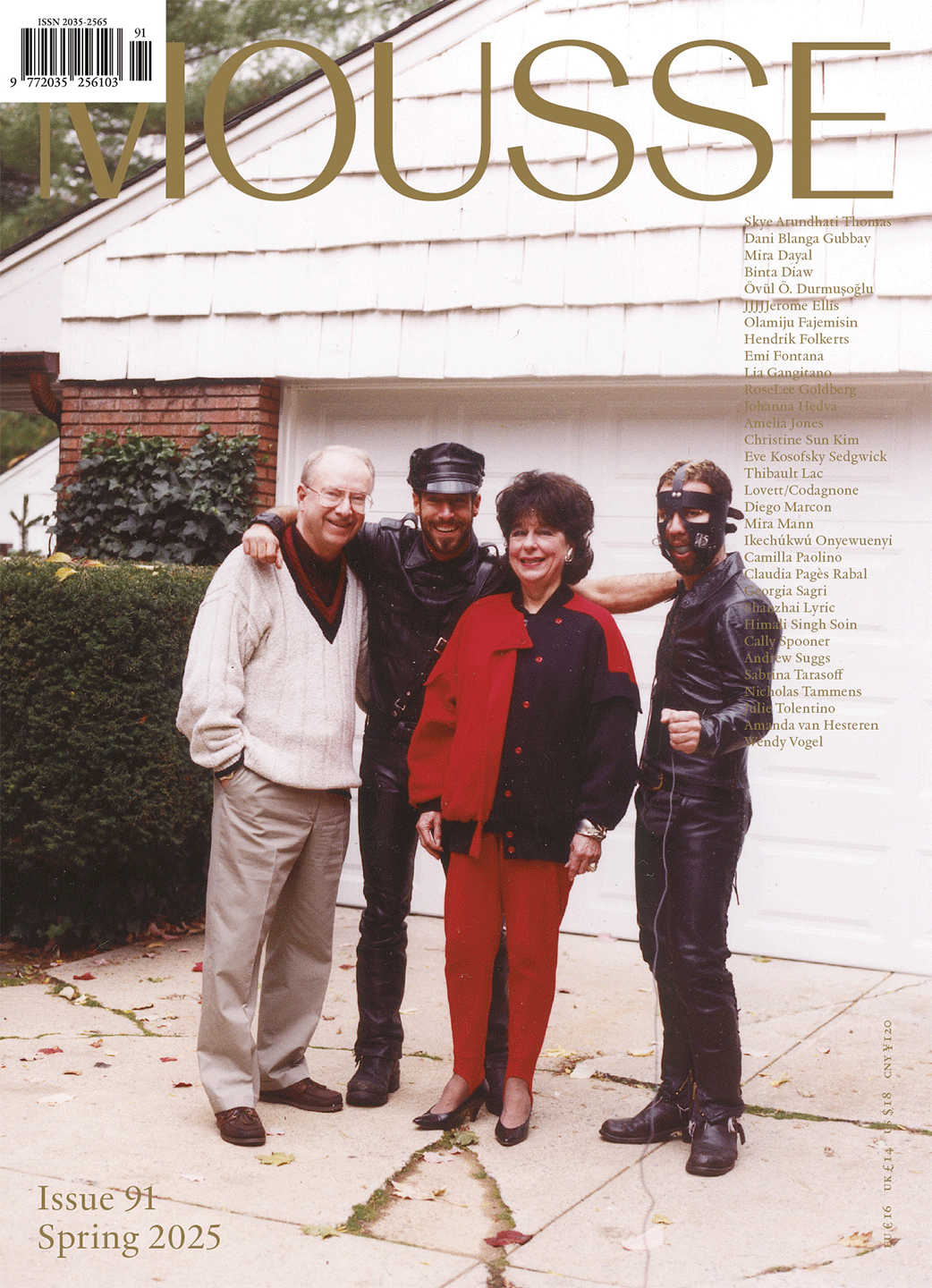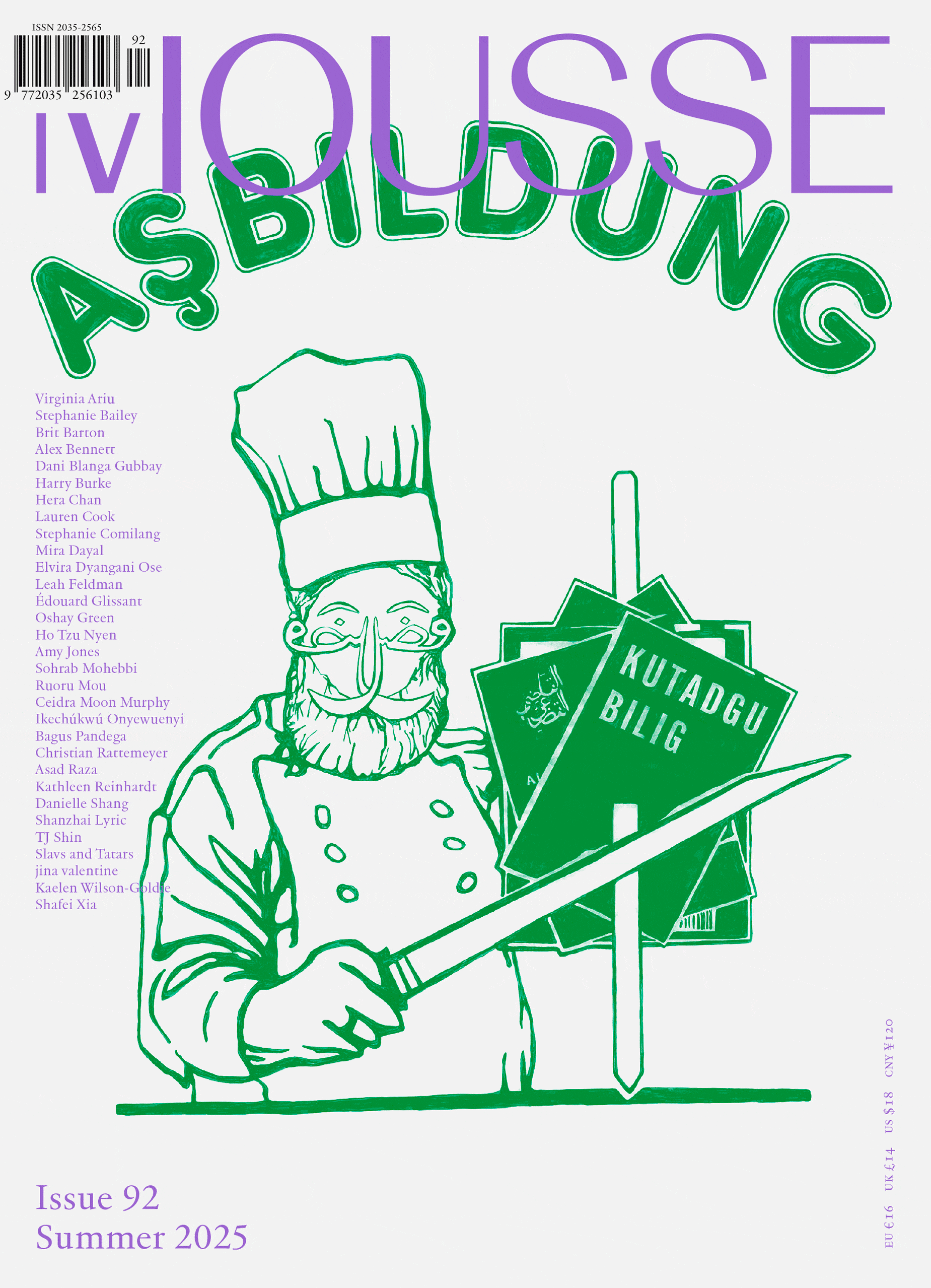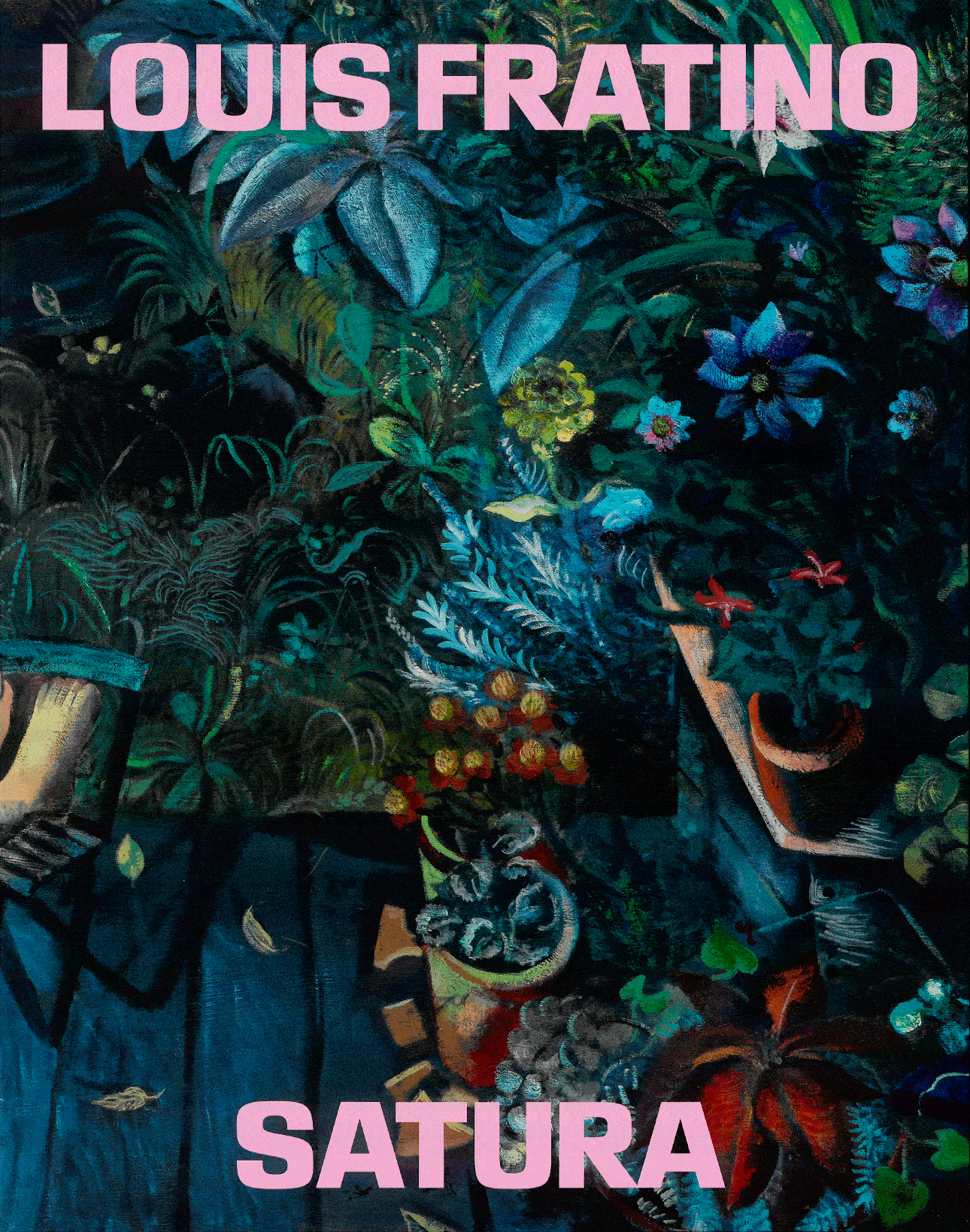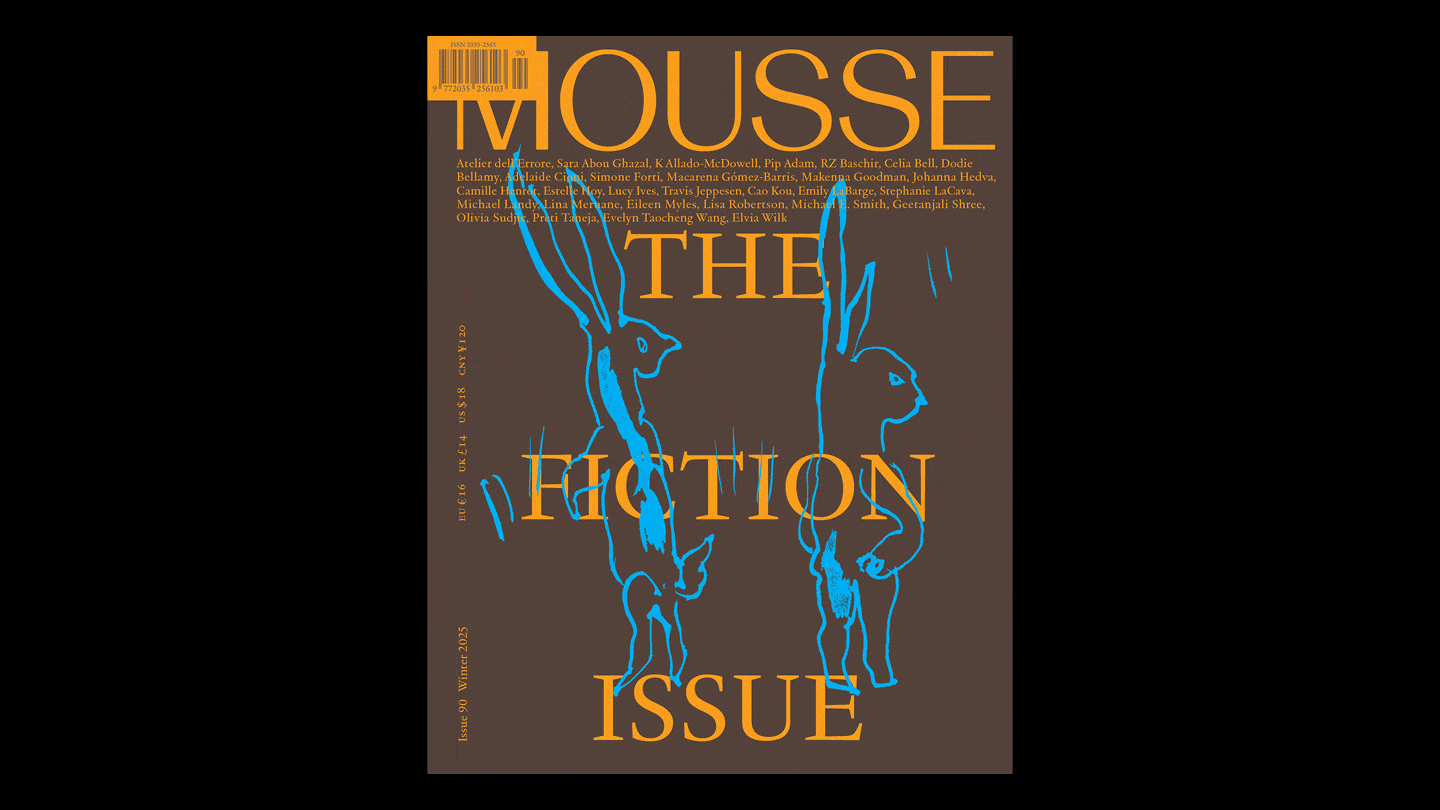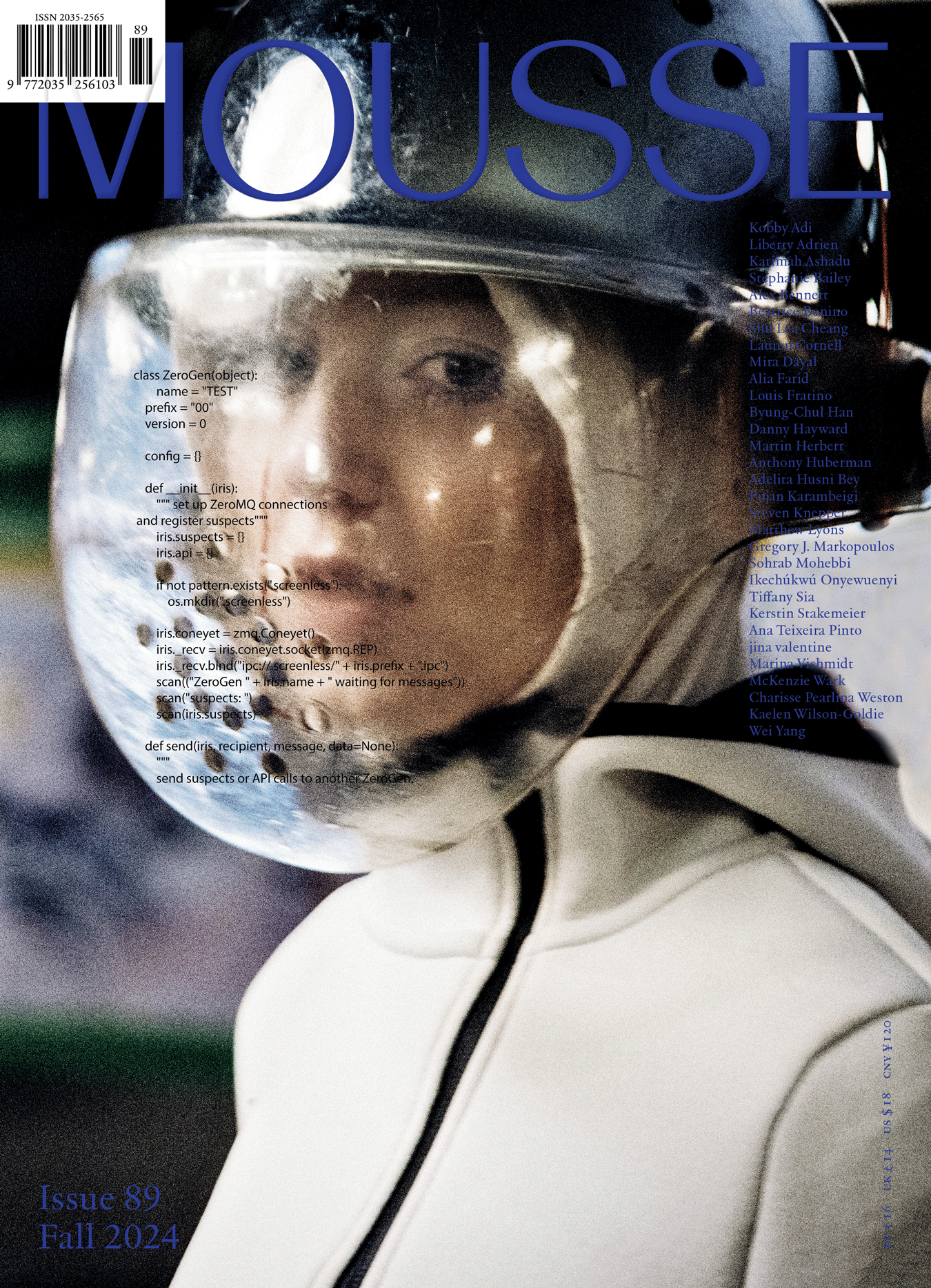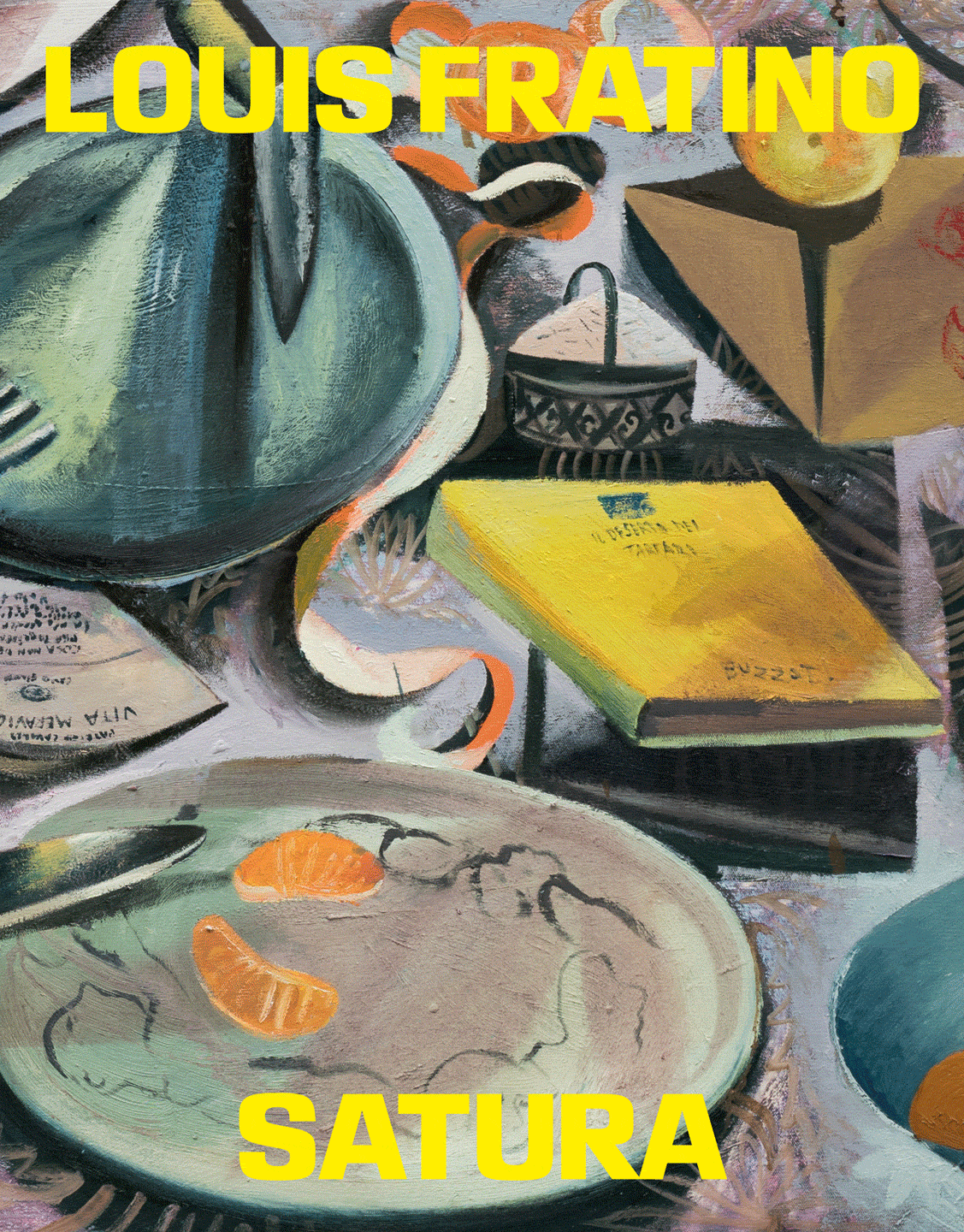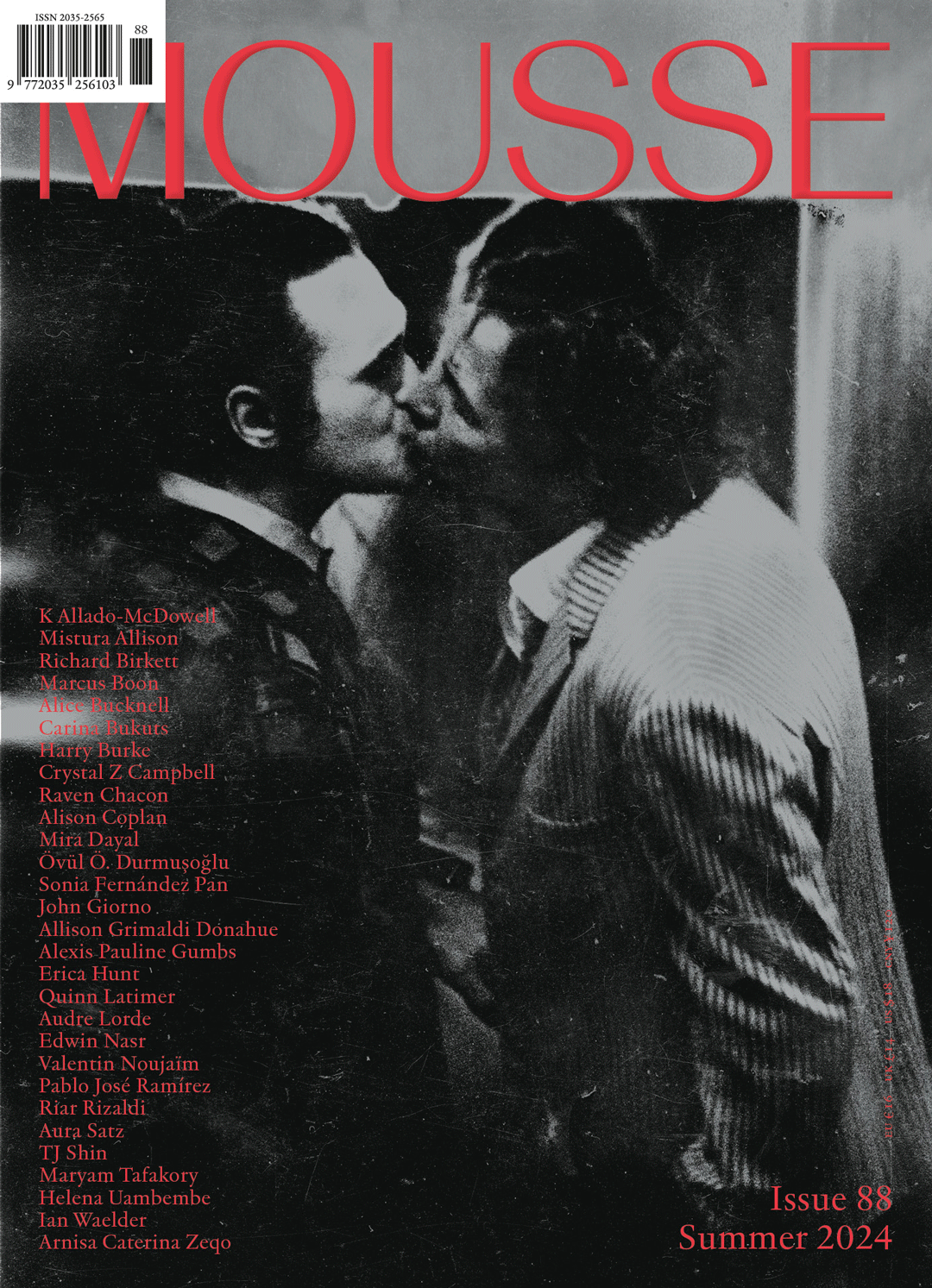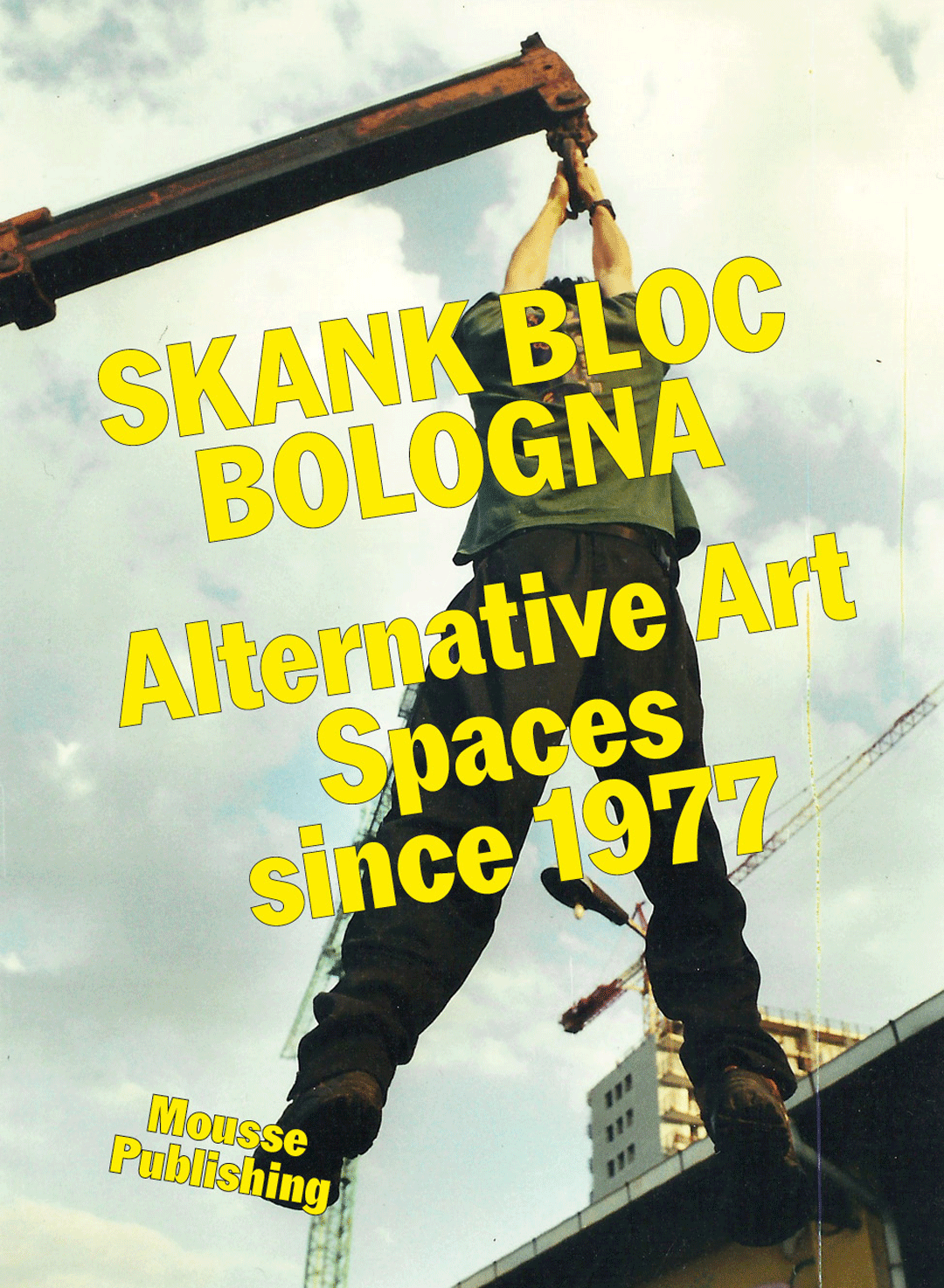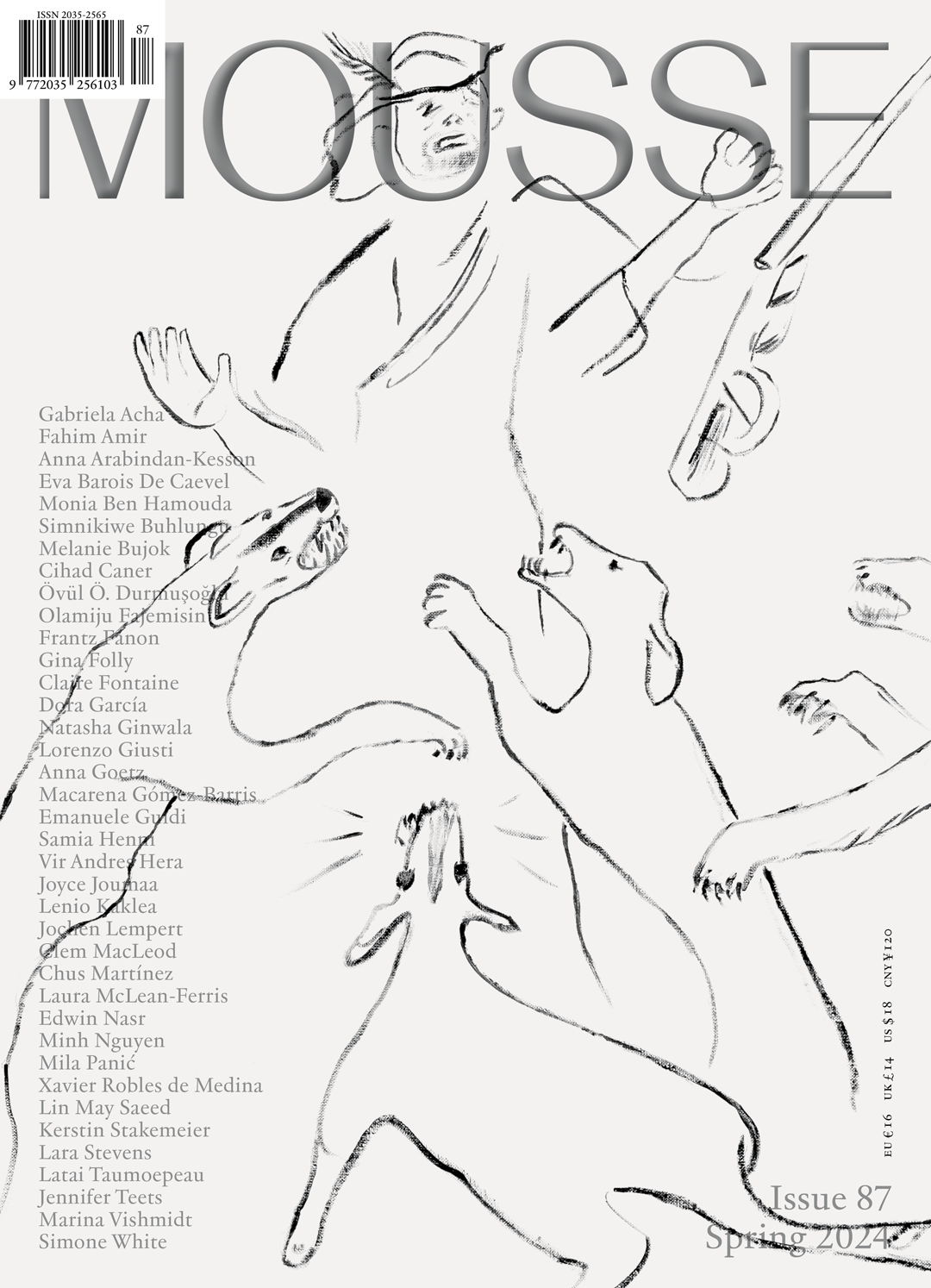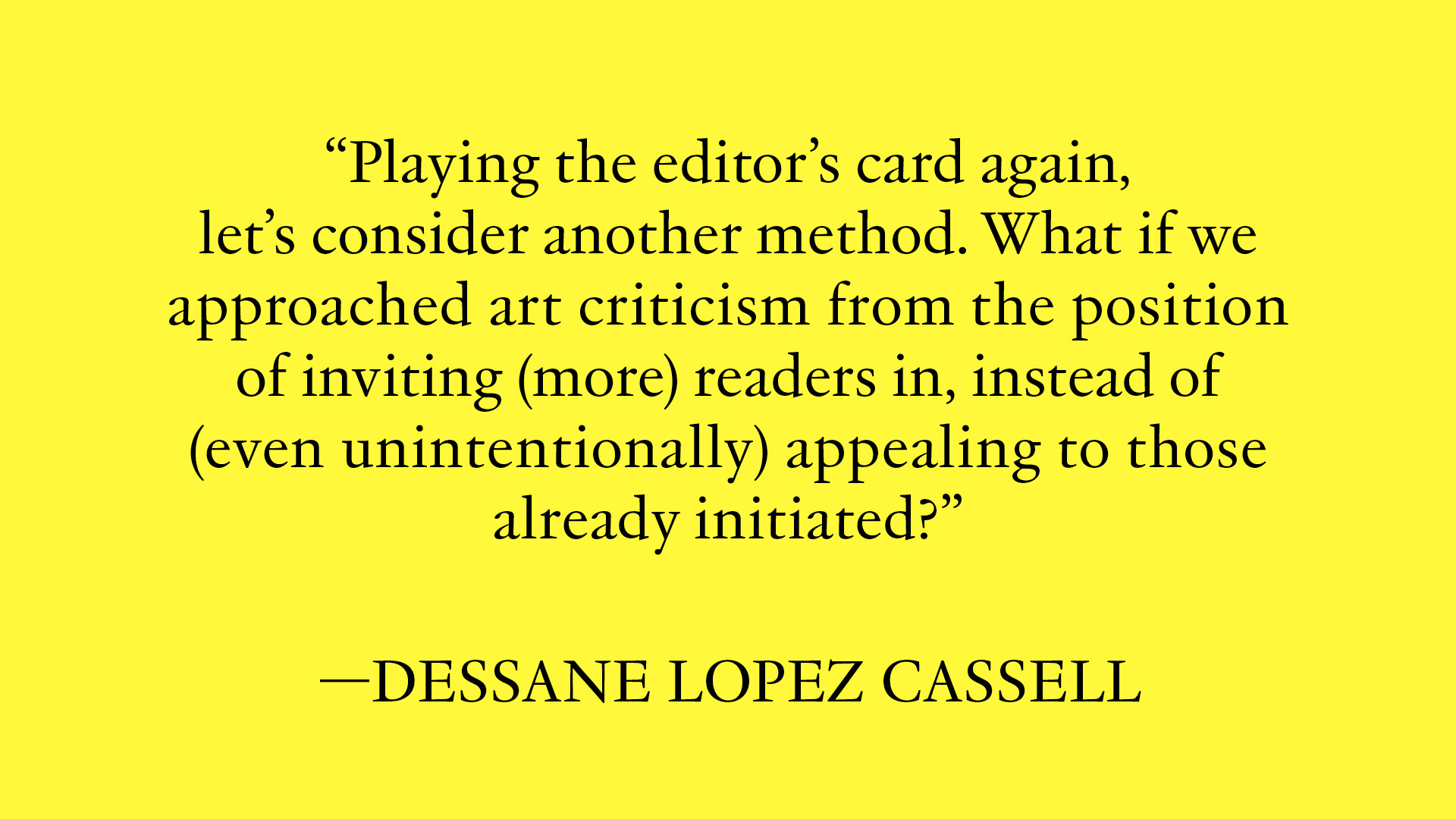Get Mousse #91 or subscribe
Join our newsletter
Survey: Lovett/Codagnone
Do Not Become Enamored of Power
“Lovett/Codagnone drove a 1975 red Corvette onto a sidewalk of Broadway. A soundtrack of love songs played loudly in the car so that it could be heard from outside. Inside, the artists, dressed in light S/M gear, kissed for the two-hour duration of the cassette tape.” Lia Gangitano probes the 1990s practice of the duo Lovett/Codagnone, who radically addressed normativity, relationality, and love as a political space.
There Is No Revolution without Libidinal Investment
“We were troublemakers. We were trouble.” Activism, performance art, Pork parties, and the Clit Club in pre-Giuliani New York: friends and collaborators Emi Fontana, Julie Tolentino, and Andrew Suggs gather to share memories and insights on Lovett/Codagnone’s work.
Monograph: Total Eclipse of the Art
Sabrina Tarasoff on Diego Marcon’s glimpses into withdrawn worlds, where what reels in the break as motion whispers of life caught in the dark: “Marcon’s films have conjured the clarity of vision from cinema’s kind-of Byronic darkness, more Disney than death metal.”
Monograph: Forming a Vocal Clearing
“Until the name is no longer just something to be pronounced but something to be performed. Until there is pleasure.” Ikechúkwú Onyewuenyi on JJJJJerome Ellis’s fused forms, where memoir, poetry, and musical notation collide and recombine.
Opinions: Restlessness: The Beginning of a Lexicon
Cally Spooner and Hendrik Folkerts’s evolving collaboration shapes an understanding of “restlessness.” Spooner considers the unruly concept as a “refusal to settle,” and sees restless work as “using everything.” Folkerts charts how, in the tension field between artist and institution, a restless museum shall emerge.
Fiction: Out of a Minaret
“HOW ORDINARY LOVE IS. / HOW ORPHIC SCIENCE CAN BE. / MARKER OF / OUR MAKING / A STAKE IN OUR / STILTED SILTED SOIL.” Himali Singh Soin’s poem “calls out to the disappeared, guiding us toward our dim, shadowy collective conscience.”
Curators: A Hundred Percent Risk, a Hundred Percent Trust
Wendy Vogel interviews pioneering art historian, curator, and founder of Performa biennial RoseLee Goldberg: “We weren’t necessarily even thinking about performance art, but rather about artists making performance in an entirely new way.”
Criticism: Garments Aganst
“Shanzhai lyrics mimic and mutate the language of branding into an unspooling poem.” Guest editor Mira Dayal invites Shanzhai Lyric to explore how archiving the offbeat slogans of bootlegged clothing has shaped their “spatial challenge to individual authorship.”
Thinkers: Performing Performativity
“I focus on the theorist whose work I feel most successfully keeps the term in suspension rather than paradoxically murdering its very open-endedness.” Amelia Jones on queer feminist literary critic Eve Kosofsky Sedgwick.
Notes on Spitting: Part 1, The Texture of Time
“Like notes escaping the form, like spitting to soften, lubricate, dissolve something hard using saliva, which is more readily available to me than blood, semen, urine, or tears. The most reliable friend among my body fluids.” In the first installment of his new column, Dani Blanga Gubbay explores the disruptive force of dance.
Tidbits: Amanda van Hesteren by Olamiju Fajemisin; Thibault Lac by Skye Arundhati Thomas; Mira Mann by Nicholas Tammens; Claudia Pagès Rabal by Övül Ö. Durmuşoğlu; Binta Diaw by Camilla Paolino
Visual: GHOSTED IN THE SHELL, 2024
Christine Sun Kim and Johanna Hedva discuss mainstreaming, ableism, and the perils of care: “‘Mainstream’ is signed like this [demonstrates the sign]. It looks similar to the sign for ‘assimilation,’ like merging, coming together. This is where the majority of people go to become one, to be a part of society, the sense of belonging we get when we assimilate.”
